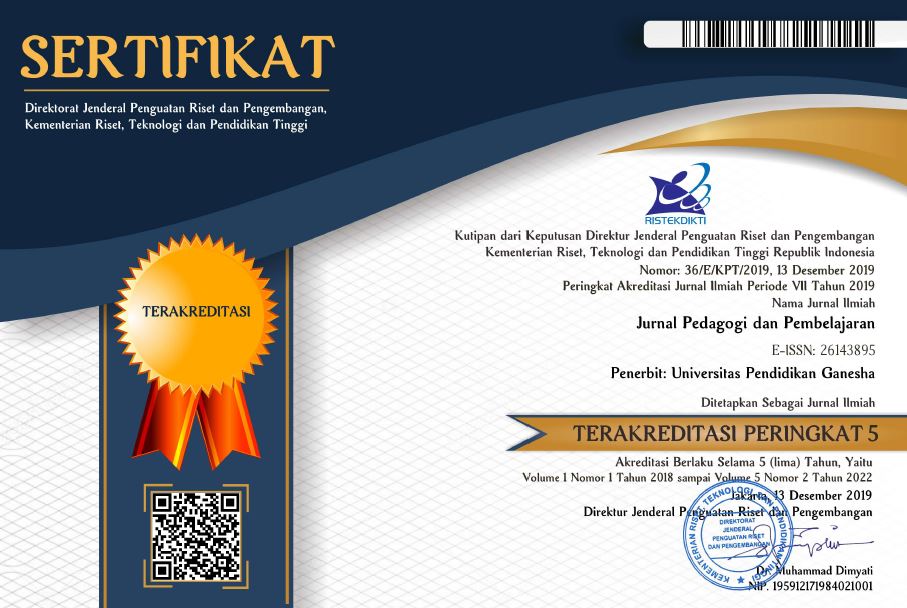Indonesian Flipbook-Based Educational Magazine with Regional Decorations for Fifth Grade Elementary School
DOI:
https://doi.org/10.23887/jp2.v7i2.75687Keywords:
Educational, Archipelago, Decorative Variety, MagazineAbstract
This research is motivated by learning problems, especially in terms of students' knowledge of regional decorative materials. This problem occurs due to students' lack of understanding of regional decorative material, causing student learning outcomes to not reach the KKM. This research aims to develop flipbook-based educational magazine media containing Indonesian language in improving student learning outcomes on regional decoration material for fifth grade elementary school students. The method used in this research is research and development research using the Borg and Gall development model. Product validity testing is carried out with material expert validators and media expert validators. The research results showed that the results of the media feasibility test were 86% with the predicate "very feasible", and the results of the feasibility test from material experts were 88% with the predicate "very feasible". The results of the effectiveness test from the trial use can be seen from the results of the pretest and posttest on a large scale. In the effectiveness test of the pretest and posttest, there was an increase in student learning outcomes after using Indonesian educational magazine media with regional decoration material. The conclusion from the research results based on development, feasibility testing with media validation, and effectiveness testing with pretest and posttest shows that there is an increase in learning outcomes in understanding regional decorative material in fifth grade students.
Published
How to Cite
Issue
Section
License
Copyright (c) 2024 candrika deva yani, Dr.Deni Setiawan,S.Sn.,M.Hum.

This work is licensed under a Creative Commons Attribution-ShareAlike 4.0 International License.
Authors who publish with Jurnal Pedagogi dan Pembelajaran agree to the following terms:- Authors retain copyright and grant the journal the right of first publication with the work simultaneously licensed under a Creative Commons Attribution License (CC BY-SA 4.0) that allows others to share the work with an acknowledgment of the work's authorship and initial publication in this journal
- Authors are able to enter into separate, additional contractual arrangements for the non-exclusive distribution of the journal's published version of the work (e.g., post it to an institutional repository or publish it in a book), with an acknowledgment of its initial publication in this journal.
- Authors are permitted and encouraged to post their work online (e.g., in institutional repositories or on their website) prior to and during the submission process, as it can lead to productive exchanges, as well as earlier and greater citation of published work. (See The Effect of Open Access)









